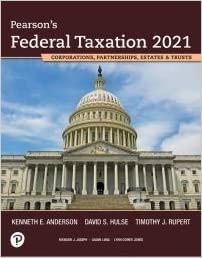Refer to the facts in Comprehensive Problem C:6-54. Now assume the entity is a partnership named Lifecycle
Question:
Refer to the facts in Comprehensive Problem C:6-54. Now assume the entity is a partnership named Lifecycle Partnership. Additional facts are as follows:
• Except for precontribution gains and losses, the partners agree to share profits and losses in a 60% (Able)—40% (Baker) ratio.
• The partners actively and materially participate in the partnership’s business. Thus, the partnership is not a passive activity.
• Partnership debt is recourse debt.
• The salary to Able is a guaranteed payment.
• The E&P numbers are not relevant to the partnership.
• In addition to the numbers provided for the assets on January 2, 2023, the following partnership book values apply:
Equipment . . . . . . . . . . . . . . . $ –0–
Building . . . . . . . . . . . . . . . 926,000
Land A . . . . . . . . . . . . . . . . 30,000
Land B . . . . . . . . . . . . . . . . 20,000
Total . . . . . . . . . . . . . . . . . . $976,000
• The partnership’s basis in Land B will be $22,000, the land’s carryover basis.
• On January 2, 2023, the partnership sells its assets and pays off the $1.87 million debt. The partnership then makes liquidating distributions of the $675,300 remaining cash to Able and Baker in accordance with their book capital account balances.
Required:
a. Determine the tax consequences of the partnership formation to Able, Baker, and Lifecycle Partnership.
b. For 2020 through 2022, prepare a schedule showing:
(1) Partnership ordinary income and other separately stated items
(2) Able’s and Baker’s book capital accounts at the end of 2020, 2021, and 2022
(3) Able’s and Baker’s bases in their partnership interests at the end of 2020, 2021, and 2022
c. For 2023, determine:
(1) The results of the asset sales
(2) Able’s and Baker’s book capital accounts after the asset sales but before the final liquidating distribution
(3) Able’s and Baker’s bases in their partnership interests after the asset sales but before the final liquidating distribution
(4) The results of the liquidating distributions, assuming a 23.8% tax rate (the 20% maximum capital gain rate plus the 3.8% rate on net investment income)
Step by Step Answer:

Federal Taxation 2021 Corporations, Partnerships, Estates & Trusts
ISBN: 9780135919460
34th Edition
Authors: Timothy J. Rupert, Kenneth E. Anderson, David S. Hulse





